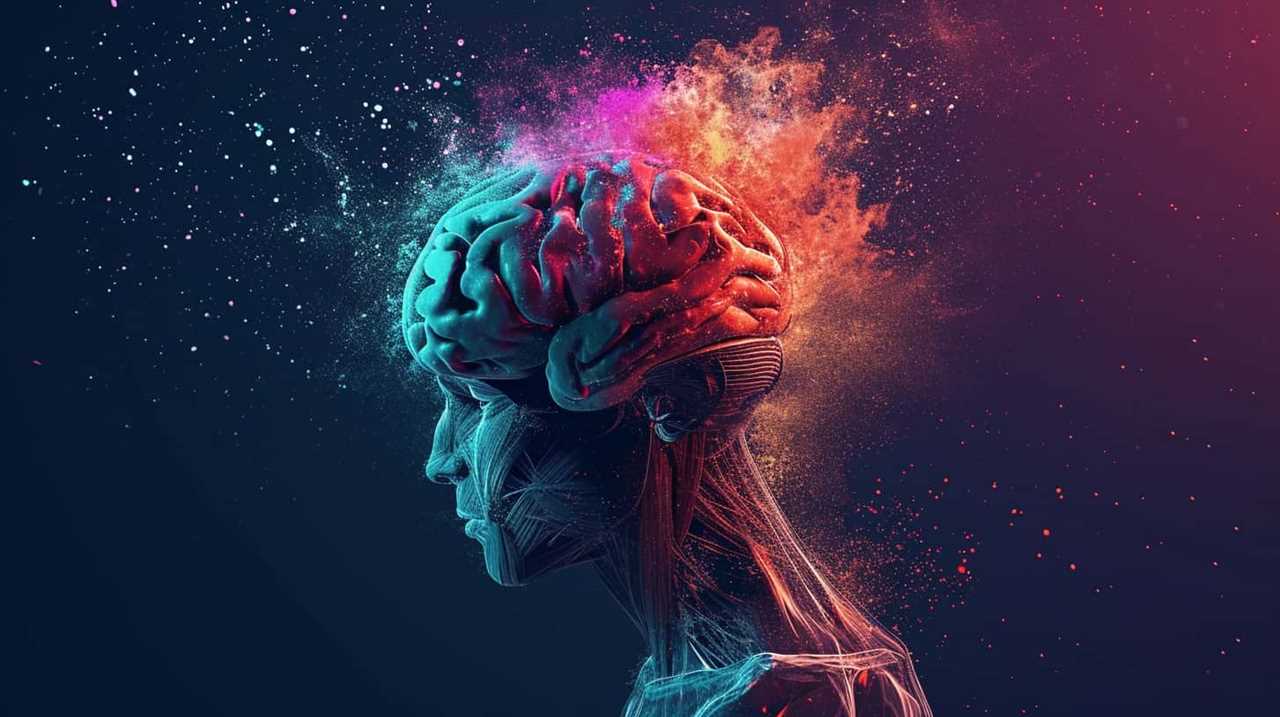In our search for knowledge and direction, we frequently look to the lessons of esteemed philosophical scholars.
Today, we delve into the rich tapestry of Asian philosophy, where three ethical wisdoms stand tall.
Confucian principles of virtuous conduct remind us of the importance of righteousness, filial piety, and respect for others.
Buddhist teachings on compassion and nonviolence inspire us to embrace empathy and kindness, extending our love to all beings.
And Taoist wisdom on harmony and balance teaches us to flow with the rhythms of life, finding peace within ourselves and in our relationships with others.
These timeless principles offer us a compass to navigate the complexities of our modern world, guiding us towards a life of service and fulfillment.
Key Takeaways
- Confucianism emphasizes righteousness, filial piety, and respect for others, and encourages self-improvement and personal growth.
- Buddhist teachings promote compassion and nonviolence, cultivate empathy towards all living beings, and emphasize the interconnectedness of all beings and the need to refrain from causing harm.
- Taoist wisdom focuses on harmony and balance, aligning with the natural order of the universe, embracing simplicity and spontaneity, and valuing inner peace and tranquility.
- Jainism emphasizes non-violence, truthfulness, and self-discipline, and seeks spiritual purity and liberation from karma. Hinduism embraces the concept of dharma, recognizes the divine presence in all beings, and practices yoga and meditation for spiritual growth.

Confucian Principles of Virtuous Conduct
In exploring the ethical wisdoms of Asian philosophical giants, we embrace the Confucian principles of virtuous conduct. Confucianism, with its emphasis on personal growth and moral development, provides valuable guidance for navigating the complexities of modern society. The teachings of Confucius, a prominent Chinese philosopher, continue to resonate with individuals seeking to lead meaningful lives and make positive contributions to their communities.
One of the key values emphasized in Confucianism is the importance of cultivating virtues. Virtues such as benevolence, righteousness, and filial piety are seen as essential for fostering harmonious relationships and creating a just society. These principles are particularly relevant in our modern world, where ethical dilemmas and moral ambiguity abound. By striving to embody these virtues, individuals can navigate moral challenges with clarity and integrity.
Confucianism also emphasizes the importance of self-improvement and personal growth. Confucius believed that individuals should constantly strive to cultivate their moral character and develop themselves in order to contribute to the betterment of society. This focus on self-reflection and self-cultivation is highly relevant in our fast-paced and individualistic society, where personal growth is often overlooked in the pursuit of success and material wealth.
By embracing Confucian principles of virtuous conduct, individuals can contribute to the creation of a more compassionate and harmonious society. Confucian values such as respect for elders, loyalty, and sincerity can guide our interactions with others and foster a sense of empathy and understanding. In a world marked by division and conflict, the ethical wisdoms of Confucianism offer a path towards greater unity and social cohesion.

Buddhist Teachings on Compassion and Nonviolence
Let’s delve into the profound teachings of Buddhist philosophy, which advocate for compassion and nonviolence as fundamental principles for ethical conduct. In Buddhism, the concept of compassion is central to the path of enlightenment and the alleviation of suffering.
The teachings of the Buddha emphasize the importance of cultivating a deep sense of empathy and understanding towards all living beings.
Buddhist teachings on compassion are influenced by the Jainist principles of ahimsa and non-harm. Ahimsa, which means non-violence, is a core principle of Jainism, and it’s also embraced by Buddhism.
Both traditions recognize the interconnectedness of all living beings and the need to refrain from causing harm to oneself and others. By practicing compassion and non-violence, Buddhists aim to break the cycle of suffering and promote peace and harmony in the world.
Similarly, Buddhist teachings on compassion also align with Hindu teachings on love and kindness. Hinduism emphasizes the importance of treating all beings with love and respect, recognizing the divine essence within each individual.
This concept of divine interconnectedness resonates with the Buddhist notion of interdependence, where every action has consequences and affects the well-being of others.
The practice of compassion in Buddhism goes beyond simply feeling sympathy or pity for others. It involves actively engaging in acts of kindness, forgiveness, and selflessness.
Compassion is seen as a transformative force that not only brings happiness and relief to others but also cultivates inner peace and wisdom within oneself.
In a world that often seems divided and plagued by violence, the teachings of Buddhism offer a powerful antidote. By embracing compassion and nonviolence, we can work towards creating a more harmonious and compassionate society, where the well-being of all beings is valued and respected.

Taoist Wisdom on Harmony and Balance
Taoist philosophy frequently emphasizes the pursuit of harmony and balance in our lives. This wisdom is derived from the concept of yin and yang, which represents the dualistic nature of the universe. In Taoism, yin and yang are complementary forces that exist in a state of constant interaction and transformation. The aim is to align ourselves with the natural order of the universe, finding harmony and balance within ourselves and in our relationships with others.
| Yin | Yang | Harmony and Balance |
|---|---|---|
| Darkness | Light | Balancing opposites |
| Passive | Active | Embracing change |
| Softness | Hardness | Cultivating flexibility |
| Feminine | Masculine | Honoring both energies |
| Stillness | Movement | Embracing stillness and action |
This table exemplifies the dynamic interplay of yin and yang and its role in achieving harmony and balance. By recognizing and appreciating the inherent qualities of both yin and yang, we can cultivate a sense of equilibrium in our lives. Just as darkness and light coexist, so too do passivity and activity, softness and hardness, femininity and masculinity, stillness and movement. It is through embracing these opposing forces that we find harmony.
In Taoism, the pursuit of harmony and balance extends beyond the individual to encompass the larger interconnectedness of all things. The natural order of the universe teaches us that everything is interconnected and interdependent. By aligning ourselves with this natural order, we can live in harmony with the world around us. This means recognizing our place within the greater whole and seeking to live in accordance with the rhythms and cycles of nature.

Frequently Asked Questions
How Do Confucian Principles of Virtuous Conduct Apply to Modern-Day Society?
Confucian principles of virtuous conduct have practical applications in modern-day society. By emphasizing respect, harmony, and filial piety, we can build a more compassionate and cohesive community, with positive societal implications for all.
What Are Some Practical Ways to Cultivate Compassion and Nonviolence According to Buddhist Teachings?
Cultivating compassion and nonviolence according to Buddhist teachings requires consistent practice and introspection. By embracing empathy and mindfulness, we can develop a deep sense of connection and a commitment to peaceful actions in our daily lives.
Are There Any Specific Rituals or Practices in Taoism That Help Individuals Achieve Harmony and Balance in Their Lives?
Taoist practices and rituals offer individuals a path to achieving harmony and balance in their lives. By following these ancient teachings, we can cultivate a deeper connection with nature and find inner peace.
How Do Confucianism, Buddhism, and Taoism Differ in Their Views on the Concept of Self and Personal Identity?
Confucianism, Buddhism, and Taoism all differ in their views on self and personal identity. Confucianism emphasizes social roles, Buddhism emphasizes the nonexistence of a permanent self, and Taoism emphasizes the harmony and interconnectedness of all things.
Are There Any Common Misconceptions or Misunderstandings About the Ethical Teachings of These Asian Philosophical Giants?
Misunderstandings and misconceptions surrounding the ethical teachings of Asian philosophical giants can hinder our understanding of their profound wisdom. By unraveling these misconceptions, we can uncover valuable insights that can guide us in serving others ethically.

What Are Some Other Ethical Wisdoms From Asian Philosophical Giants besides Lao Tzu’s Taoist Proverbs?
Confucius emphasized the importance of moral and ethical behavior in personal and political life, with his “Analects” offering valuable insights. Meanwhile, Buddha’s teaching of compassion and non-attachment in the “Dhammapada” provides another ethical perspective. These Asian philosophical giants offer wisdom beyond Lao Tzu’s Taoist proverbs.
Conclusion
In exploring the ethical wisdoms of Asian philosophical giants, we uncover timeless principles that have the power to shape our understanding of virtue, compassion, and harmony.
The Confucian principles of virtuous conduct remind us of the importance of cultivating moral character in our daily lives.
Buddhist teachings on compassion and nonviolence challenge us to extend empathy and understanding to all beings.
And Taoist wisdom on harmony and balance encourages us to seek equilibrium in our relationships and actions.
Together, these teachings offer invaluable guidance for navigating the complexities of our modern world.
Lauren’s talent in writing is matched by her passion for storytelling. Her love for books and deep understanding of culture and entertainment add a distinct flavor to her work. As our media and press contact, Lauren skillfully bridges the gap between afterQuotes and the broader media landscape, bringing our message to a wider audience.










